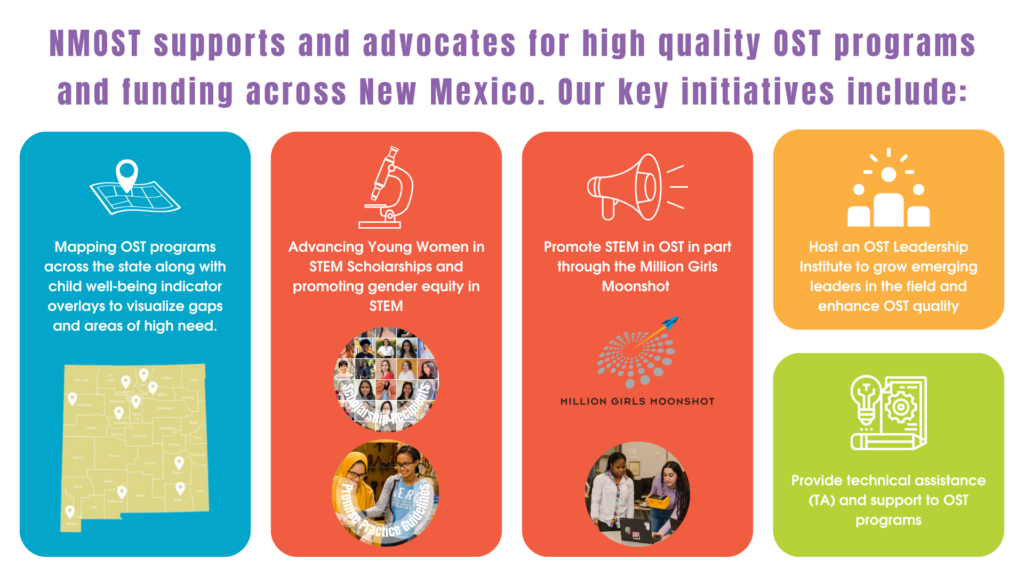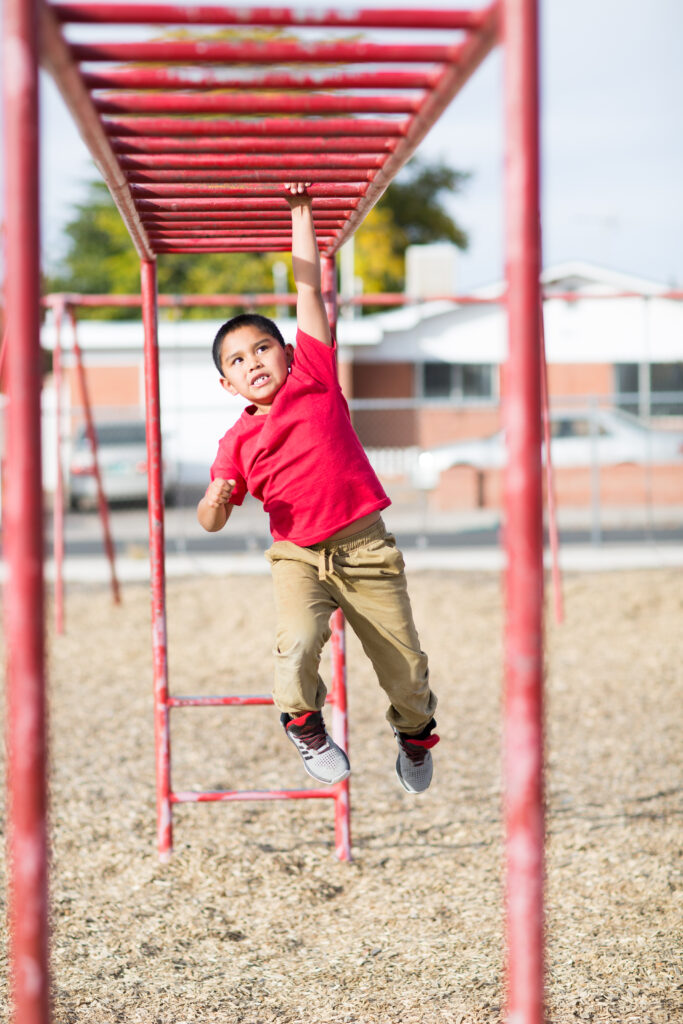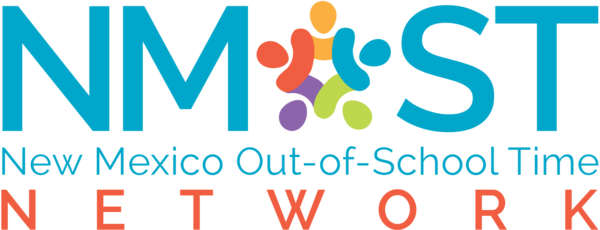What We Do

Why OST Matters
Afterschool and summer learning programs help young people develop the skills they need for a successful future. Students across New Mexico are engaging in hands-on projects, working together to tackle real-world problems, and getting connected with community projects, internships, summer jobs and mentoring experiences.
Students who participate in afterschool and summer learning programs attend school more often, do better in school and are more likely to graduate. These expanded learning opportunities engage students in enriching experiences that foster leadership, collaboration, and responsibility.
Families across America report that the gap between work and school schedules can be up to 25 hours per week. Parents’ lack of after-school options results in lost productivity that costs U.S. businesses up to $300 billion per year.
- Approximately 8 of 10 registered voters said that afterschool programs are an absolute necessity for their community.
- When parents have afterschool choices, they have peace of mind: 85% of New Mexico parents say afterschool programs help working parents keep their jobs or work more hours.
- More than 9 in 10 parents statewide support public funding for afterschool and summer learning programs.
OST benefits New Mexico students:
Afterschool programs promote better nutrition, increased physical activity, self-confidence and resilience, healthy choices, and hands-on STEM learning. Afterschool programs accelerate students’ academic growth and support their well-being.
New Mexico In Context

In New Mexico, for every student in an afterschool program, 3 more would participate if the opportunity were available. That leaves nearly 60,000 children and youth alone and unsupervised between the hours of 3pm and 6pm – a time of day that sees high rates of juvenile crime and victimization.
New Mexico is a state rich in cultural diversity and very much in need of programs that face up to the social and economic challenges that impact the quality of life for children and youth. The fifth largest state in area, its two million people have the second highest poverty rate in the nation (19.7%). Approximately 27% of students live in poverty and 41.9% live in single-parent households; 28% speak a language other than English at home, 20% live in high poverty areas, and only 71.1% graduate high school on time (the lowest graduation rate in the U.S.). New Mexico is also 6th in the nation for youth suicides.
New Mexico has the second largest proportion of Native Americans of the 50 states, with 23 Native American tribes and pueblos, and 76% of New Mexico students are students of color. Twenty-seven of New Mexico’s 33 counties are classified as frontier counties, accounting for 38.2% of the population. New Mexico has 89 school districts, a large majority of which are rural and 978 schools with 318,621 students.
For more data on New Mexico’s out-of-school time landscape, see the Afterschool Alliance New Mexico After 3pm Dashboard.
